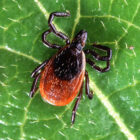Elections & Politics
Ship doomed on Lake Michigan now docked on National Register of Historic Places
|
SHIPWRECK: Only a year after its launch in Detroit, the ill-fated Mojave sank in an 1864 storm, taking its crew of five to the bottom of Lake Michigan. The ship, well-preserved due to the lake’s cold water, was just added to the National Register of Historic Places. By Eric Freedman. FOR ALL POINTS.









